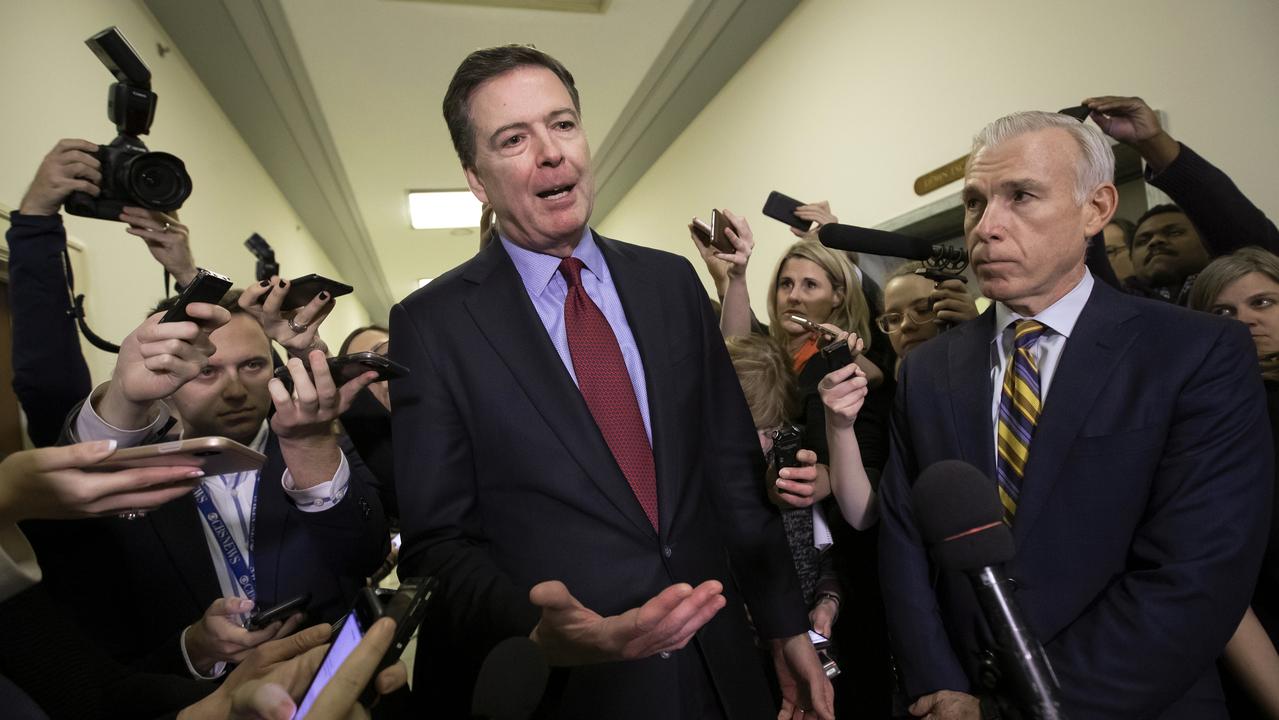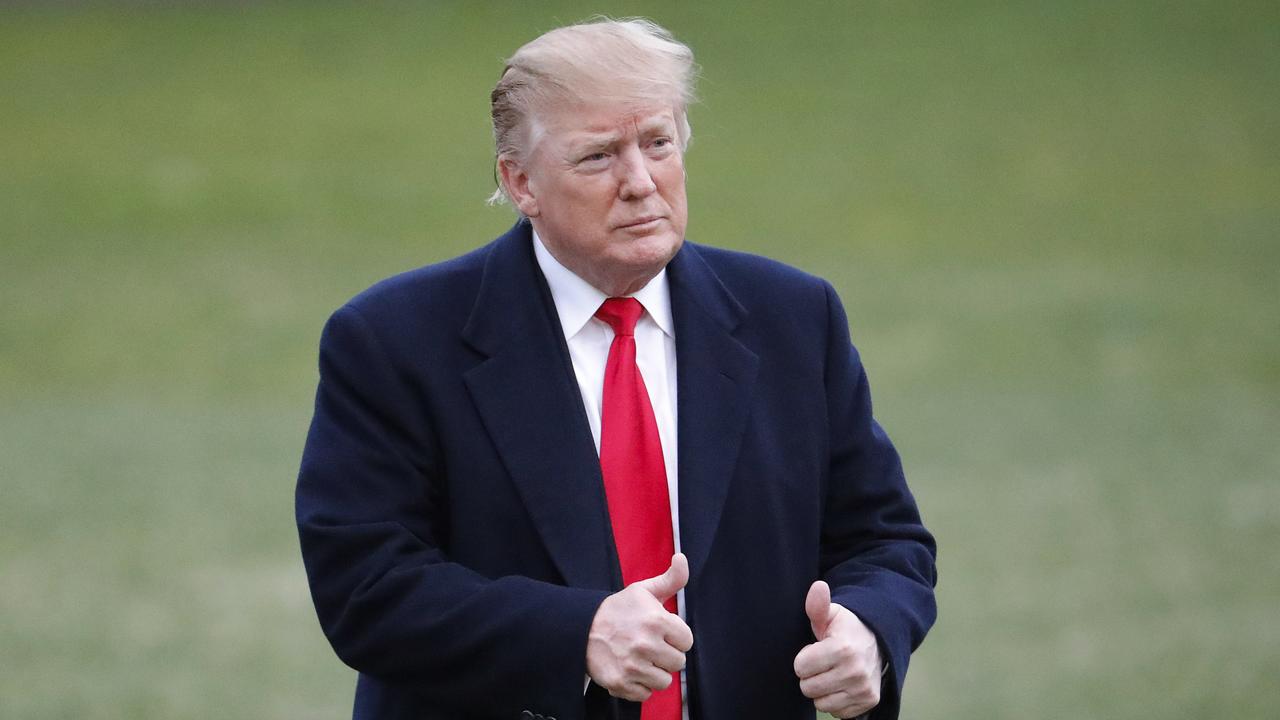Animals under fire in methane blame game
EMISSIONS from kangaroos are trifling compared with gas from cattle and camels.
IF you look at a map of southeast NSW where grazier John Alcock and his children run three properties on the edge of the Snowy Mountains, you'll see that national parks and state forests cover at least the same area as private grazing country.
Out of the national parks come mobs of kangaroos that know their way into Alcock's drought-hit land when he plants improved pasture and fodder crops for cattle and fine-wool Merinos.
"Good heavens, if we sow something, they just invade us," Alcock tells The Australian.
"Kangaroos will travel for miles to get a crop."
Some culling of kangaroos is permitted on some private grazing land. But shooters are not allowed into the parks and park authorities do not allow any kangaroo harvesting.
The kangaroo situation does not make Alcock and many other graziers particularly well-inclined towards those in the climate change debate who brand their sheep and cattle as villains in global warming.
Ruminant livestock account for about 11 per cent of Australia's greenhouse emissions.
There is not much dispute about the science.
It shows that ruminants, particularly cattle, are belching greenhouse gas factories. They stew up and ferment fodder in their four stomachs as they chew their cud, absorb the nutrition, and expel methane (mostly out the front end, not the back).
As a result, the more aggressive advocates for reduced greenhouse emissions have cattle and other ruminant livestock squarely in their sights.
But for graziers on the Monaro in southeast NSW, there is a certain lack of fairness in gunning for cattle while protecting the rights of kangaroos to hop out of the parks, eat improved pasture, and hop back to digest it and emit the residue into the atmosphere under the protection of park rangers.
For Alcock, it is particularly annoying to watch this process considering that while they are smaller than cattle, kangaroos are nonetheless large animals, and there are a lot more of them than cattle: about 34 million just in the rangeland grazing areas, where the federal government keeps track of them to set harvesting quotas.
Alcock says if there is to be some sort of regime to apply financial sanctions for greenhouse emissions of livestock, it should apply equally.
The national parks, says Alcock, should face the same sanctions for the emissions of their animals, including wombats, koalas and pygmy possums.
"If they are going to do it for one, they should do it for both," according to Alcock.
It's an intriguing aspect of the greenhouse debate. To draw on George Orwell's Animal Farm, are all animals equal? Or are some more equal than others because they are cuddly native animals and therefore higher up the social value scale than introduced livestock? Or do some animals have less of a right to exist because they were born with big greenhouse gas-emitting digestive systems?
John Cobb, a NSW Nationals federal MP who is the Coalition's agriculture spokesman, thinks that if there is one animal that should be eliminated in the interests of saving the planet, it's the feral camel. There are an estimated one million feral camels in Australia, and Cobb challenges Kevin Rudd to get rid of them.
"I don't hate camels," Cobb says. "But it's not a native animal, it's a feral animal."
Cobb, who comes from a farming family, says everyone on one side of the debate "hates cattle - all the greenies say how they're making for the end of the world". But, he says, camels per head are much more damaging to the environment. "Camels are a ruminant, like sheep, cattle, goats.
"A camel puts out just shy of a tonne of carbon a year and a cow about 1.3 tonnes, but I bet if you put the camels on to the better tucker that the cows enjoy, they would be just as effusive."
What's more, says Cobb, camels also degrade the environment by grazing out and damaging land, thereby reducing agricultural productivity. Cobb commissioned research that found eliminating feral camels would reduce Australia's carbon emissions by more than the equivalent of taking 300,000 cars off the road.
The greenies, Cobb says, "just have to get over it" when it comes to cattle, and accept that Australia's 25 million national herd is nothing compared with the 250 million in India.
Another aspect of Cobb's view of the animal world is that he would have no problem removing some of the kangaroos in national parks. Park authorities, he says, allow overpopulation to erode the roo's health and encourage them to pillage the paddocks of the "poor old cockies".
But veterinary scientist and zoologist George Wilson says if graziers used a bit of lateral thinking and the government provided incentives, they would come to see kangaroos as their new best friend, and environmental and financial saviour.
Wilson, who is head of Canberra-based consultancy group Australian Wildlife Services and an associate staff member of the Institute of Environmental Studies at the University of NSW, says the starting point should be the science. Different types of animals, he says, have digestive systems that are not only bigger or smaller than each other's, but work in fundamentally different ways so that they produce very different types and quantities of emissions.
Cattle have stomachs working on about 40 litres of a spicy digestive brew containing a particular range of micro-organisms that do the specific biochemical job that suits them.
"In that process, cattle belch large amounts of methane," Wilson says.
Kangaroos, by contrast, are "non-ruminant forestomach fermenters". While cattle have digestive systems known as single-stirred tank reactors, kangaroos have multi-stirred tank reactors that use a completely different set of bugs in their guts and operate in a quite different way.
The result is that kangaroos emit virtually no methane, but just a bit of acetone, which is not a greenhouse gas.
One minor implication, says Wilson, is that rather than shooting kangaroos in national parks, it would be far more productive to allow sports shooters into the parks to hunt feral goats and deer, which he says "are spewing out methane".
Based on Wilson's studies, however, if greenhouse emissions are the only thing that count, it might be worth exterminating at least one other native animal: emus. An average emu emits 0.11 tonnes of carbon equivalent emissions each year, the same as a goat and nearly up there with sheep.
The main issue for Wilson, though, is that a move away from cattle and sheep and towards kangaroos as a meat source would do a great deal for combating greenhouse gases.
The point about methane, says Wilson, is that it is a far more diabolical gas than carbon dioxide when it comes to global warming: it is 21 times more damaging.
Also, Wilson points out, methane stays in the atmosphere for less time than it takes carbon dioxide to break down. So, reducing methane emissions would have a much faster and greater effect in curbing global warming on a tonne-for-tonne basis.
In a paper Wilson wrote with his colleague Melanie Edwards, published in US journal Conservation Letters, the authors say the average kangaroo emits only 0.003 carbon equivalent tonnes per year.
The authors conducted some modelling that found that if Australian graziers reduce the national herds by seven million cattle and 36 million sheep (that is, by about one-third) by 2020, it would be possible to lower the country's greenhouse gas emissions by 16 megatonnes, or 3 per cent of Australia's annual emissions.
To replace the meat, Wilson and Edwards suggest, graziers could encourage kangaroos on the rangelands to multiply to 175 million (by providing them with water, reducing livestock numbers, killing dingos and tilting the population towards more females). They could then be harvested, allowing commercial shooters to sell them to abattoirs.
An obvious question is what would encourage farmers to adopt such a plan.
One approach, says Wilson, would be to bring agriculture fully within an emissions trading scheme or carbon tax, so they would face the same punitive financial sanctions as other industries.
That appears unlikely. While the Labor government at first wanted to bring agriculture into its proposed ETS by 2015, it dropped the proposal in a bid to get a deal with the Coalition to pass the ETS legislation.
Since the collapse of that deal, Labor seems to have decided agriculture is in the too-hard basket.
The other, more feasible possibility, says Wilson, would be to provide a positive incentive through a voluntary offsets scheme. Farmers could receive credits for reducing their greenhouse emissions, which could then be sold on the ETS market.
To Wilson's surprise, the grazing community has not rushed to embrace his proposal.
In fact, Wilson says, the reaction he received from Meat and Livestock Australia, which represents the industry's interests, was that "they regard this as all a bit loopy".
Loopy was not the word used by Beverley Henry, MLA's manager of environment sustainability and climate change, when The Australian sought her view of Wilson's scheme. Rather, says Henry, the idea would just not work.
Henry, an environmental scientist, has no dispute with Wilson about the science.
But she says the problem is Wilson's "extrapolation of the basic science in terms of what is possible and what is practical".
For starters, says Henry, "you would be slaughtering a huge number of animals".
About 10 to 14 kangaroos would have to be harvested to provide the same amount of meat as a single head of cattle, she says, meaning a shooting spree to take out tens of millions of roos each year.
"You have to ask if society is comfortable with slaughtering kangaroos on that sort of scale and whether society is ready to accept the substitution of beef and lamb [with] kangaroo."
Also, Henry points out, kangaroos don't take well to the idea of becoming livestock.
"They are not easily herded and not easily contained in fences." That makes the task of animal husbandry rather problematic, so trying to breed and maintain a stable kangaroo population, which fluctuates substantially due to drought and other factors, would be difficult.
Wilson replies by pointing out that kangaroos formed a central part of the Aboriginal diet for thousands of years, and that not having to capture kangaroos to administer anti-parasite medicines or dehorn them would be a big plus for farmers, who would also no longer need fences.
One way or another, it's unlikely that greenhouse effusive animals are going to completely escape the attention of the government as it gears up for another crack at legislating an emissions reduction scheme.
"Agriculture will continue to play a role in addressing climate change," a spokeswoman for Climate Change Minister Penny Wong says.
"Excluding agricultural emissions does not mean that farmers cannot be part of the solution to climate change.
"The government will work with industry to consider a range of ways in which the agricultural sector can contribute to the transition to a low-pollution economy."



